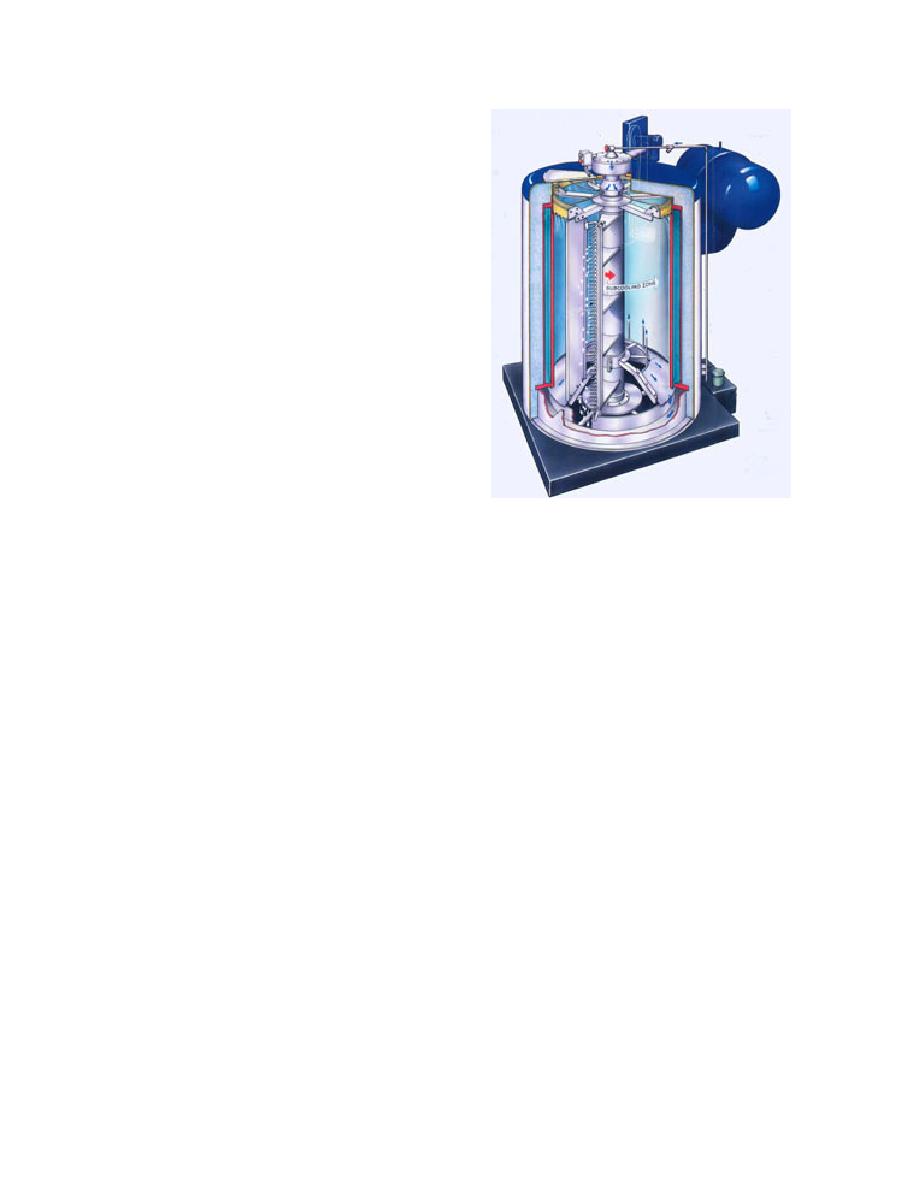
lographic arrangement of water molecules. These wa-
ter molecules are bonded together by the positive
charge concentrations of one molecule in contact with
the negatively charged concentrations of another. This
purely electrostatic attraction between charged concen-
trations is very strong and plays a major role in orga-
nizing the structure of the ice crystal. Because of this
strong attraction, other molecules or particles cannot
become part of the ice crystal lattice and are rejected.
As a result, suspended and dissolved solids are rejected
by growing ice crystals that are made up of water mol-
ecules only. Any non-water molecules are displaced
into voids between ice crystals or into the concentrated
solution ahead of the freezing front. The amount of
non-water molecules displaced into voids depends on
the rate at which the solution is frozen. Flash-frozen
ice contains approximately the same concentration of
non-water molecules as the parent solution, so no freeze
concentration takes place. Conversely, ice frozen at a
slow freezing rate contains almost no non-water mol-
ecules. For practical purposes, the desired degree of
displacement lies somewhere between these two ex-
tremes. To complete the concentration process, the ice
Figure 1. Drum ice maker. (Illustration courtesy of
must be thawed and the meltwater removed by drain-
North Star.)
ing or decanting.
Freeze concentration of dissolved impurities can be
(Seattle, Washington) has a flake ice maker that can
accomplished by two techniques: freeze crystallization
freeze up to 48,500 L/day.
and progressive freezing. In freeze crystallization, the
solution is mixed during freezing. This procedure forms
Objective
slurries consisting of ice crystals and concentrate. The
The overall purpose of this study is to evaluate the
slurry is then pumped to a wash column where the crys-
feasibility of using progressive freeze concentration
tals are washed with pure water. Because of the high
to dewater pinkwater, a typical Army industrial waste.
surface area of small crystals, some of the concentrate
Specific objectives of this project are to
is retained in the ice slurry after washing. This tech-
nique is preferred by the food processing industry
1. Measure and model the effect of freezing rate,
where the concentrate is the desired product and the
solute concentration, solute characteristics, and other
ice is the waste. A small amount of concentrate in the
variables on the mechanism of freeze concentration.
ice can be tolerated. In this application, the desired end
2. Measure the quality of the meltwater and con-
product is the ice and the concentrate is the waste.
centrate.
In progressive freezing, ice is grown on a refriger-
3. Use the models to predict the best method of
ated surface at a controlled rate. The impurities are
freezing and the best operational range for each vari-
rejected into the solution ahead of the growing ice front.
able.
When the impurities reach the point at which they are
no longer rejected, the refrigeration cycle is stopped
Scope
and the concentrate is drained away. Because of its
Halde (1980) found that the effectiveness of the
operational simplicity, we believe that progressive
progressive freezing process depends on three vari-
freezing is the method of choice for this application.
ables: freezing rate, mixing intensity, and impurity
Taylor (1989) found that TNT and RDX were excluded
concentration. The freezing rate is important because
from the ice structure at freezing rates of up to 3.2 mm/
it affects ice crystal growth and the subsequent rejec-
hr using this technique. Conceivably, progressive freez-
tion of impurities. Generally, a slow freezing rate is
ing could be accomplished by industrial ice-making
more effective than a fast freezing rate. Mixing is im-
machines such as the one shown in Figure 1. These
portant because it sweeps away the accumulation of
machines can produce several tons of ice per day.
impurities ahead of the freezing front. For this same
For example, North Star Ice Equipment Corporation
2



 Previous Page
Previous Page
